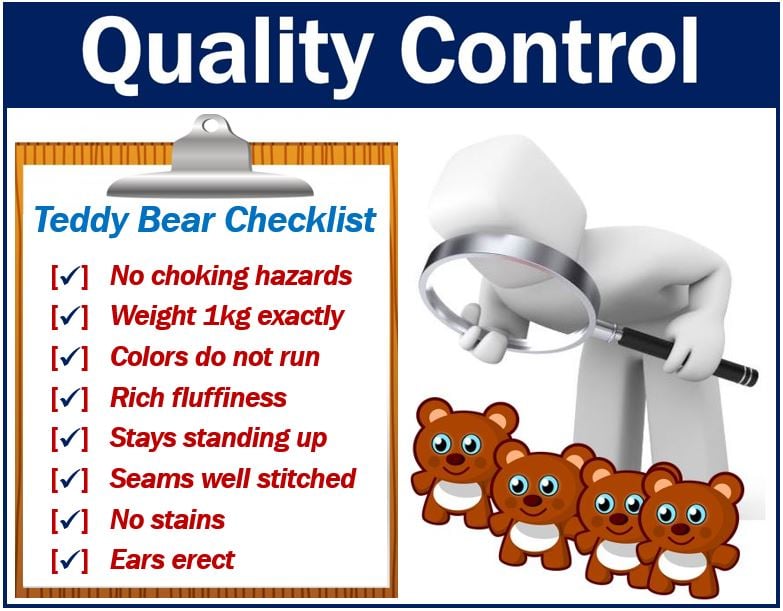Quality Control is a system in manufacturing of maintaining standards. It involves testing a sample of the output. The quality controller or inspector tests the samples against their specification. We also call it QC.
QC is a specialized kind of system control designed to check that a product meets design specifications and quality.
ISO 9000 says that quality control is “A part of quality management focused on fulfilling quality requirements.” ISO stands for International Quality Organization. ISO 9000 is a family of quality management systems standards.
Effective quality control systems often employ statistical methods, such as Statistical Process Control (SPC), to monitor and control the quality of products during the manufacturing process.
QC is one of four fields that make up quality management. The other three are quality assurance, quality improvement, and quality planning.
Quality
‘Quality’ refers to how good something is. It contrasts with ‘quantity.’
When somebody says ‘how much‘ or ‘how many,’ we think about quantity. If, on the other hand, they say ‘how good,’ we think about quality.
Quality control – before production
Before making something, its designer determines what quality checks are necessary and when to carry them out.
A top-quality product should:
- function correctly,
- be defect-free,
- be safe to use or consume,
- satisfy the requirements of the customer, and
- meet the specifications.
Quality control – inspection
Inspection is an important component of QC. The inspector examines the product visually. If it is a service, he or she will examine the service’s end results.
The product inspector will have descriptions and lists of defects that are not acceptable. In most cases, cracks and blemishes, for example, are unacceptable defects.
In addition to testing and inspection, Quality control also involves systematic tracking of all aspects of production to identify areas for continuous improvement.

Quality control vs. quality assurance
These two terms refer to two aspects of quality management. Even though quality assurance (QA) and QC are closely related, they are different.
Put simply; quality assurance focuses on defect prevention – it monitors the process. Quality control, on the other hand, focuses on identifying defects – it monitors the product.
Let’s imagine that Tom is making a birthday cake. First, he checks that his procedure is correct and that he has all the right equipment and ingredients. This is quality assurance.
When he has made the cake, he tastes it to make sure it is good. He also looks at it to make sure it looks nice. That is quality control.
Diffen.com explains the difference between the goals of QA and QC as follows:
“The goal of QA is to improve development and test processes so that defects do not arise when the product is being developed.”
“The goal of QC is to identify defects after a product is developed and before it’s released.”
-
A corrective tool and a managerial tool
Quality control is a corrective tool. Quality assurance, on the other hand, is a managerial tool.
Where does QC reside in a company?
If you run your company properly, quality assurance resides independently of manufacturing and operations.
Quality control, on the other hand, resides within manufacturing and operations, Kimberlee A. Washburn writes in a MasterControl article.
‘Quality’- a common Business English term
There are many 2-word phrases in business English that start with the word ‘quality,’ apart from quality control and quality assurance.
Examples include quality management, quality improvement, quality engineering, quality standards, quality creep, quality inspection, and quality circle.
Video – What is the Environment?
This video, from our YouTube partner channel – Marketing Business Network, explains what the term ‘Environment’ means using simple and easy-to-understand language and examples.
